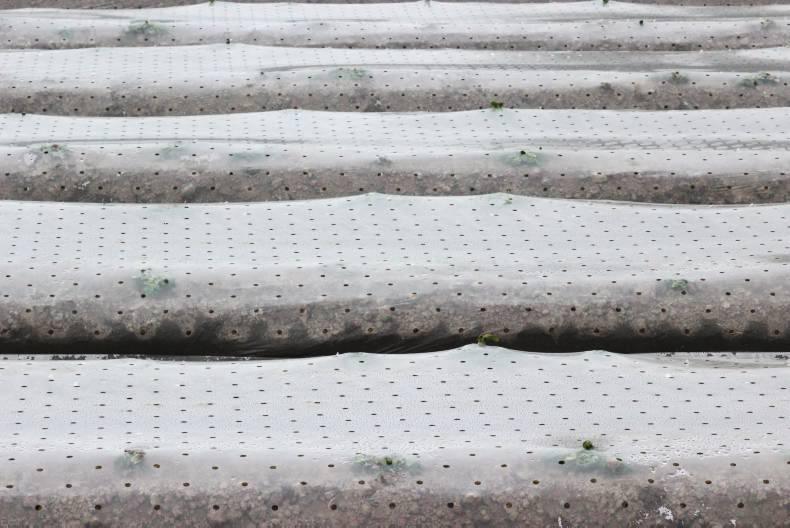A few weeks ago, I stumbled across a field covered with perforated plastic in Rush, Co Dublin. Plastic is not an unfamiliar sight nowadays, given its prominence on maize, and it is also used for a number of horticultural crops. Plastic is used to help warm the soil to encourage early growth to either bring harvest date forward or to increase yield potential.
What was different about this crop was that the plastic covered the ridges and I asked myself about the additional challenges associated with both managing the plastic and the crop itself.
The field in question belonged to Paud Flynn & Sons Potato Growers and I spoke to Gerry Flynn to enquire about the management of the plastic and its justification.
Asked if this was a new technique, Gerry replied “We have been using this super-stretch plastic for about 30 years now. We use it for the first early potato crop in the hope that it brings harvest date forward by about a week. But if things go wrong we could be harvesting an uncovered field before a covered field. It is a considerable extra cost and may only pay for itself three years out of four,” Gerry said.
He explained that the system involves a series of additional costs. As well as the initial plastic, which is a few hundred euro per acre, there is the cost of laying the plastic, the physical cost of removing it, the cost of additional weed control and the necessity for irrigation post-removal.
Frost challenge
The main risk to the system is frost. Gerry explained that as the leaves grow up against the plastic, condensation forms and when this freezes, the following thaw will result in the death of the leaves that touch the plastic. This can remove some of the advantage of the plastic, but the bulk of the crop is still protected.
The type of plastic used is quite strong. When fitted, it is fixed firmly into the soil either side of a pair of ridges.
As the crop emerges and the bulk of stems grow, they continue to put pressure on the plastic. When rain comes to soften the soil holding in the plastic fold, the pressure of growth helps to release some of the plastic in the fold to enable further expansion of the canopy.
Because the plastic is durable, it must be removed after four to six weeks to enable the foliage to develop.
This involves using equipment that will pull the plastic out of the ground, roll it up and sometimes pull off the leaves and stems that had begun to grow through the plastic holes. This is a big task in itself and then the used plastic must be sent for recycling.
The timing of plastic removal is a compromise between the increasing size of the canopy, the risk from blight infection, the need to provide for air to drive growth and the necessity to avoid frost in the days following removal. The canopy will be naturally soft post-removal and this would be subject to frost should it occur within days.
The plastic can also be left on for too long. Blight is a real risk given the humidity beneath the plastic. For this reason, the target is to remove the plastic by 1 May before the humidity is likely to increase to problematic levels.
Management
Once the plastic is removed, additional weed control will be needed. Residual herbicide is applied prior to the plastic being laid, but weeds generally manage to grow in the drip zone beneath the breathing holes in the plastic, Gerry said.
Crops must also be irrigated following plastic removal as the soil beneath the plastic can be very dry.
“This practice is not for the faint-hearted,” Gerry commented. “It is high-risk, especially at the time of plastic removal. Frost in May can be deadly. The combination of lush soft growth, a sunny day and night frost can destroy any advantage.”
Plastic may give about a week’s advantage in harvesting date and extra price is needed to justify the cost. Gerry said that about 20% of his total crop is sown under plastic and this is generally all of his first earlies.






 This is a subscriber-only article
This is a subscriber-only article








SHARING OPTIONS: